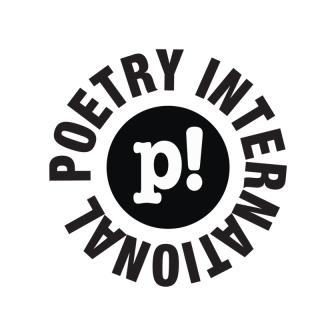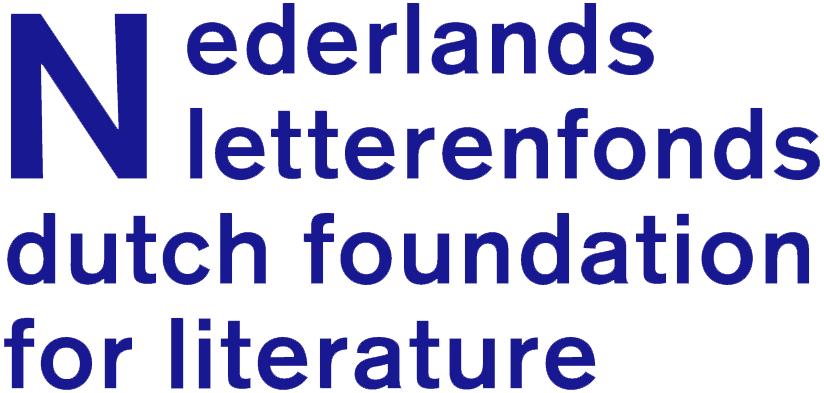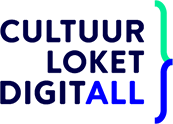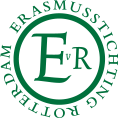Article
Editorial: August 2008

July 31, 2008
The eyebrows form a circle around the eyes, as
the semicircles of the ears are the size of the
open mouth & the mouth is one eye length from
the nose, itself the length of the lip & at the top
the nose is as wide as one eye. From the nose
to the ear is the length of the middle finger
and the chin is 2 1/2 times as thick as the finger.
Mathematics intersects with language, this time on a structural level, in the avant-garde work of Belgian poet Mark Insingel. In his introduction to Insingel’s work, Patrick Peeters notes “the variegated and modulating way in which verses are repeated and juxtaposed, giving the impression that his writing originates in mathematical logic”. ‘With Heads Held High’ demonstrates this technique, building in rhythm and intensity with each lengthening line, repetition and variation. In this way, without explicit narrative, a triumphant orderly parade morphs into a brutal, blood-spattered battle.
The second poet in the Belgium section is Els Moors, who excels in infusing the everyday with a sense of precise yet dreamlike eeriness. She is well aware of the body as both a receptor of pain and pleasure, and her sparse verse is particularly unsettling in its moments of quiet violence juxtaposed with sex, for example in ‘the sky is an arch within which’:
he uses a corner of the table
to remove the feathers
and only yellow skin remains
quite willingly
I am dragged into the bedroom
A unique eroticism is present in many of the poems by Mitsuharo Kaneko, one of the most prominent Japanese poets of the twentieth century. Published along with an informative biographical essay by translator Hiroaki Sato, the selection of his work is rich in unsettling, strident imagery. In ‘Another Poem’, for example, unflinching scatological metaphor (“in the narrow shitpot / I’m being tickled / along with other poops”) is used to articulate lost love, while ‘Love 8’ is an ode to “the shrill farts” of an empress. However, the visceral descriptions in Kaneko’s work are often profoundly melancholic rather than joyously erotic. ‘To An Old Lady’ is a particularly poignant portrait of a naked woman in old age:
Like the marks left by someone hitting,
these aquamarine stains
that remain all over her body
are the fingerprints of those who touched her and went.
Like a fruit left unsold
at the fruit store.
The theme of the marked body as an archive of memory and pain is also prevalent in the selection of work by the British poet Tim Liardet, which is taken from his collection of elegies written for a dead brother. These poems are tender, but never sentimental; anger bubbles alongside grief, and descriptions of the distortion and wounding of the body are frequent: a beaten face is a “Galapagos of kick-marks”, an upper lip is “split open / like a plum into halves”, a “shackle of muscles” is “thumbed and moulded” into a death-bed “final, fuck-it-all visage”. In the remarkable poem, ‘The Constables Call’, the still growing “deceased’s toenails” are referred to as “living evidence”, but rather than providing clear answers to the forensic quest for “the truth of the mysterious dying”, they are indecipherable signs which “flourish like clues / and curl back into accusation”.
Samantha Wynne-Rhydderch considers death and the body in her poem ‘Découpage’, in which the narrator attempts to “blot out” the post mortem of the addressee by busying herself in the kitchen. Though off-stage, the clinically violent activities of the post mortem subtly but firmly infiltrate the poem through the memories of the addressee’s hobby of appliqué: “quilted queens” are “sewn”, “pinned”, “slit” and “slashed”. The theme of sewing continues in the shift of focus to the narrator’s own body, implicit of her own survival, and mortality: “I / restricted by nine stitches in my back, / itself a collage of red lines and thread.”
The talented Tiffany Atkinson is the third of the poets selected by Kathryn Gray, this month’s guest editor of the United Kingdom section. The body finds its way into Atkinson’s work too, for example in her witty, inventive and celebratory ‘Portrait of the Husband as Farmers’ Market’:
His chest is a trestle laid with rare meats, smelling
of the smokehouse, his belly a seed-loaf, knotted
and oddly exotic. The sex of the husband’s a plump
trout, a one-off, lolling silverside-up in its shine
for a wife with the eye of a magpie. His heart,
apparently a leafy crop, is a loom of many rhizomes
reaching furlongs – who knows how far?
In my first issue of PIW as central editor it has been wonderful to encounter such sharp and lively writing. I hope you are moved, challenged and entertained, as I was, by this month’s poems.
The body, as a complex symbol of existence and decay, beauty and pain, love and death, has featured in poetry throughout the ages. In this issue of PIW, many of the poems invoke the body in fresh and unexpected ways; some are contemplative and elegiac, others visceral and erotic.
The Australia section presents a selection of work by John Forbes, a poet who is not widely known outside his home country, but deserves to be. In its articulation of politics, poetics, popular culture, and Australian identity, Forbes’ writing is, as editor Michael Brennan puts it in, “knowledgeable without being in any way defensive or pompous”. This is an apt description of ‘Four Heads & how to do them’, his poised but playful exploration of human anatomy through various artistic and philosophical approaches. Have fun testing the accuracy of the mathematical proportions of the ‘Classical Head’:The eyebrows form a circle around the eyes, as
the semicircles of the ears are the size of the
open mouth & the mouth is one eye length from
the nose, itself the length of the lip & at the top
the nose is as wide as one eye. From the nose
to the ear is the length of the middle finger
and the chin is 2 1/2 times as thick as the finger.
Mathematics intersects with language, this time on a structural level, in the avant-garde work of Belgian poet Mark Insingel. In his introduction to Insingel’s work, Patrick Peeters notes “the variegated and modulating way in which verses are repeated and juxtaposed, giving the impression that his writing originates in mathematical logic”. ‘With Heads Held High’ demonstrates this technique, building in rhythm and intensity with each lengthening line, repetition and variation. In this way, without explicit narrative, a triumphant orderly parade morphs into a brutal, blood-spattered battle.
The second poet in the Belgium section is Els Moors, who excels in infusing the everyday with a sense of precise yet dreamlike eeriness. She is well aware of the body as both a receptor of pain and pleasure, and her sparse verse is particularly unsettling in its moments of quiet violence juxtaposed with sex, for example in ‘the sky is an arch within which’:
he uses a corner of the table
to remove the feathers
and only yellow skin remains
quite willingly
I am dragged into the bedroom
A unique eroticism is present in many of the poems by Mitsuharo Kaneko, one of the most prominent Japanese poets of the twentieth century. Published along with an informative biographical essay by translator Hiroaki Sato, the selection of his work is rich in unsettling, strident imagery. In ‘Another Poem’, for example, unflinching scatological metaphor (“in the narrow shitpot / I’m being tickled / along with other poops”) is used to articulate lost love, while ‘Love 8’ is an ode to “the shrill farts” of an empress. However, the visceral descriptions in Kaneko’s work are often profoundly melancholic rather than joyously erotic. ‘To An Old Lady’ is a particularly poignant portrait of a naked woman in old age:
Like the marks left by someone hitting,
these aquamarine stains
that remain all over her body
are the fingerprints of those who touched her and went.
Like a fruit left unsold
at the fruit store.
The theme of the marked body as an archive of memory and pain is also prevalent in the selection of work by the British poet Tim Liardet, which is taken from his collection of elegies written for a dead brother. These poems are tender, but never sentimental; anger bubbles alongside grief, and descriptions of the distortion and wounding of the body are frequent: a beaten face is a “Galapagos of kick-marks”, an upper lip is “split open / like a plum into halves”, a “shackle of muscles” is “thumbed and moulded” into a death-bed “final, fuck-it-all visage”. In the remarkable poem, ‘The Constables Call’, the still growing “deceased’s toenails” are referred to as “living evidence”, but rather than providing clear answers to the forensic quest for “the truth of the mysterious dying”, they are indecipherable signs which “flourish like clues / and curl back into accusation”.
Samantha Wynne-Rhydderch considers death and the body in her poem ‘Découpage’, in which the narrator attempts to “blot out” the post mortem of the addressee by busying herself in the kitchen. Though off-stage, the clinically violent activities of the post mortem subtly but firmly infiltrate the poem through the memories of the addressee’s hobby of appliqué: “quilted queens” are “sewn”, “pinned”, “slit” and “slashed”. The theme of sewing continues in the shift of focus to the narrator’s own body, implicit of her own survival, and mortality: “I / restricted by nine stitches in my back, / itself a collage of red lines and thread.”
The talented Tiffany Atkinson is the third of the poets selected by Kathryn Gray, this month’s guest editor of the United Kingdom section. The body finds its way into Atkinson’s work too, for example in her witty, inventive and celebratory ‘Portrait of the Husband as Farmers’ Market’:
His chest is a trestle laid with rare meats, smelling
of the smokehouse, his belly a seed-loaf, knotted
and oddly exotic. The sex of the husband’s a plump
trout, a one-off, lolling silverside-up in its shine
for a wife with the eye of a magpie. His heart,
apparently a leafy crop, is a loom of many rhizomes
reaching furlongs – who knows how far?
In my first issue of PIW as central editor it has been wonderful to encounter such sharp and lively writing. I hope you are moved, challenged and entertained, as I was, by this month’s poems.
© Sarah Ream
Sponsors
























